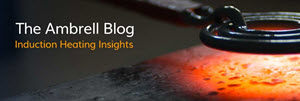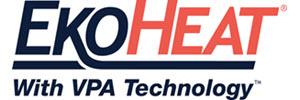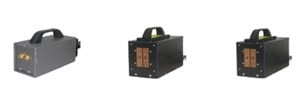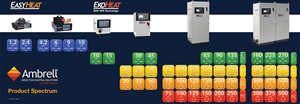Induction Cap Sealing
- Home
- Process Applications
- Cap Sealing
What is Induction Cap Sealing?
The electromagnetic field generated by the induction sealing system heats the foil/polymer liner placed over the container opening as it passes under the induction coil. This heating melts the polymer, sealing the liner upon cooling.
Induction generates an electromagnetic field in a work coil that induces currents in the conductive material of a workpiece placed within or near the coil. Friction from these currents elevates the temperature of the workpieces and filler to be brazed.
Benefits of cap sealing with induction
-
Meets tight production tolerances with precise localized heat to small areas creating pinpoint accuracy
-
Increases production rates with faster heating cycles
-
Reduces defect rates with repeatable, reliable heat
-
Eliminates variability from operator-to-operator, shift-to-shift
-
Maintains metallurgical characteristics of the individual metals
cap sealing Application Notes
Select from our collection of cap sealing notes, taken from years supporting our customers. Read how we helped to solve their process heating challenges.
 Sealing an Aluminum Cap Seal on a Plastic Jug
Sealing an Aluminum Cap Seal on a Plastic Jug
To heat one aluminum cap seal on a plastic jug for a cap sealing application. The client is replacing past systems that no longer work for their process.
 Bonding Foil to a Plastic Bottle
Bonding Foil to a Plastic Bottle
It was confirmed that the aluminum heated sufficiently to create a bond between the foil and the bottle, meeting the client’s objective.
 Sealing Aluminum Caps (Beverages)
Sealing Aluminum Caps (Beverages)
Induction delivers the same result time after time, making it ideal for this high-volume manufacturing process. The space-efficient 45 kW EKOHEAT fits nicely into the client's floor plan.
An EASYHEAT and a workhead required a minimal footprint, saving the client floor space.
 Sealing an aluminum disk onto a plastic cap
Sealing an aluminum disk onto a plastic cap
Induction heating enabled the aluminum to seal to the plastic cap quickly without the cap being damaged. The customer desired a quick rate which would make in-sourcing the process worthwhile, and induction heating exceeded the targeted production rate thanks to its fast heating.
 Heating pre-assembled plastic tube and cap for cap sealing application
Heating pre-assembled plastic tube and cap for cap sealing application
Customer currently has Ambrell equipment and would like to increase their run rate.
 Sealing aluminum foil cap to plastic bottle
Sealing aluminum foil cap to plastic bottle
Coil design can be incorporated to fit a wide range of production setups. Hands-free heating, involves no operator skill for manufacturing and directly heats only perimeter of foil.
 Cap Sealing 3.5 Lotion Container
Cap Sealing 3.5 Lotion Container
Power is applied directly to the foil; no energy is wasted heating the cap or the surrounding air or parts.
 Cap Sealing; Shampoo Container
Cap Sealing; Shampoo Container
A three-turn two-position helical coil is used to heat the aluminum foil in a tunnel style assembly. Product (containers) passes easily under the induction coil.
What are the Benefits of Cap Sealing with Induction Heating?
Precise bonding due to the efficient delivery of energy provides a high quality seal. It is repeatable and reduces the likelihood of product quality issues
How Can Cap Sealing with Induction Improve Production Speeds?
Induction heating systems are able to be integrated into production lines with a high throughput rate. The efficiency and consistency of induction heating will lead to significant improvements in production speeds and reliability of the joint created.
How Can Induction Cap Sealing Reduce Downtime?
Due to the reliability and repeatability of induction heating systems the downtime from production line stoppage is reduced as the joints created are done in a controlled matter reducing the likelihood of making bad product requiring rework or production line setup changes.
Popular Cap Sealing Note
Popular Cap Sealing Video
From our blog
More Cap Sealing Resources
AMBRELL CORPORATION
1655 Lyell Avenue
Rochester, NY 14606
United States
F: +1 585 889 4030
AMBRELL B.V.
Holtersweg 1
7556 BS Hengelo
The Netherlands
AMBRELL Ltd.
Unit 6, Space Business Centre
Tewkesbury Road
Cheltenham, GLOS, GL51 9FL
United Kingdom
F: +31 546 788 154


 Sealing a Plastic Container
Sealing a Plastic Container





